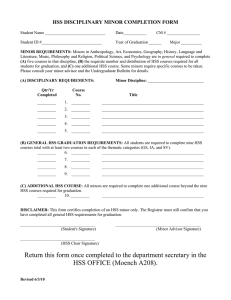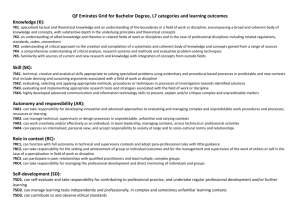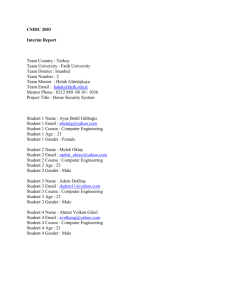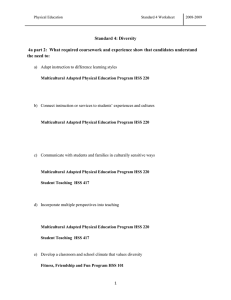Chapter 7: China
advertisement
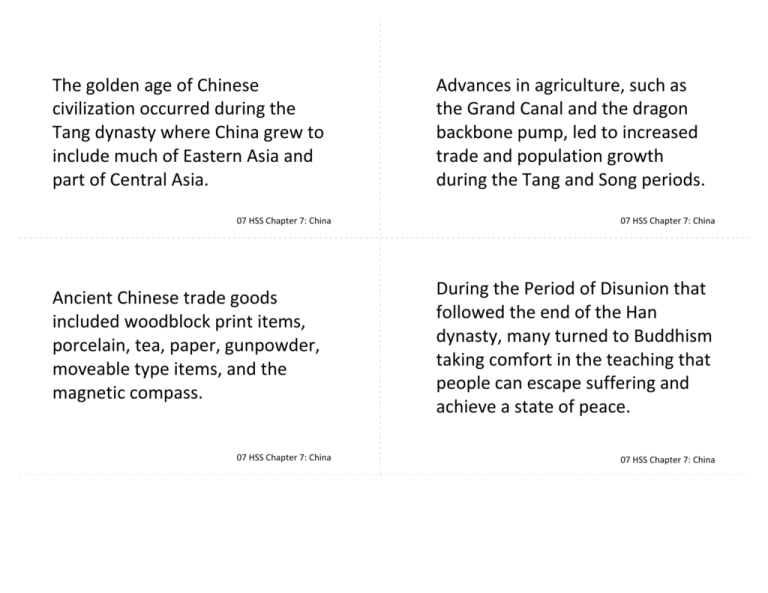
The golden age of Chinese civilization occurred during the Tang dynasty where China grew to include much of Eastern Asia and part of Central Asia. 07 HSS Chapter 7: China Ancient Chinese trade goods included woodblock print items, porcelain, tea, paper, gunpowder, moveable type items, and the magnetic compass. 07 HSS Chapter 7: China Advances in agriculture, such as the Grand Canal and the dragon backbone pump, led to increased trade and population growth during the Tang and Song periods. 07 HSS Chapter 7: China During the Period of Disunion that followed the end of the Han dynasty, many turned to Buddhism taking comfort in the teaching that people can escape suffering and achieve a state of peace. 07 HSS Chapter 7: China Most foreign trade in China went over land routes to India, Southwest Asia, Korea, and Japan. Later, sea trade allowed China to open its Pacific ports to other countries. 07 HSS Chapter 7: China China under late Ming rule tried to eliminate all foreign influences and, through the policy of isolationism, became technologically backward. 07 HSS Chapter 7: China The dominant philosophy in China during the Song period was Confucianism, based on the teachings of Confucius who focused on proper behavior. 07 HSS Chapter 7: China Civil service exams tested ones’ grasp of Confucianism, and passing them meant obtaining work as a scholar-official in the Song government. 07 HSS Chapter 7: China Kublai Khan declared himself emperor of China during the Yuan Dynasty and expanded trade and public works. Scholar-officials were elite members of society and were widely admired for their knowledge and ethics. 07 HSS Chapter 7: China 07 HSS Chapter 7: China The Chinese improved their ship and sailing skills thanks to the great sailor, Zheng He. 07 HSS Chapter 7: China 07 HSS Chapter 7: China The Ming were known for their grand building projects, such as the Forbidden City and the restoration of the Great Wall of China. 07 HSS Chapter 7: China

